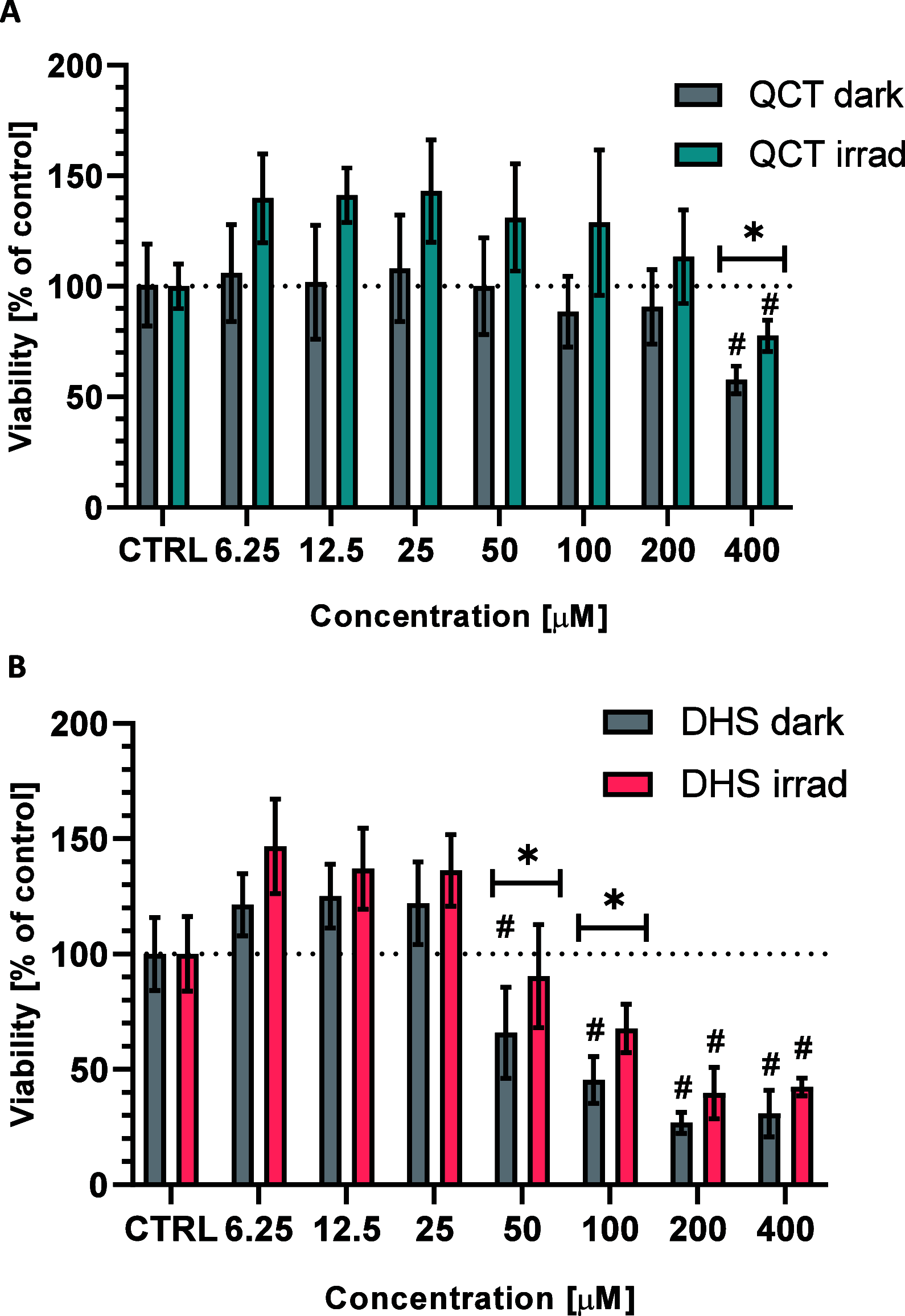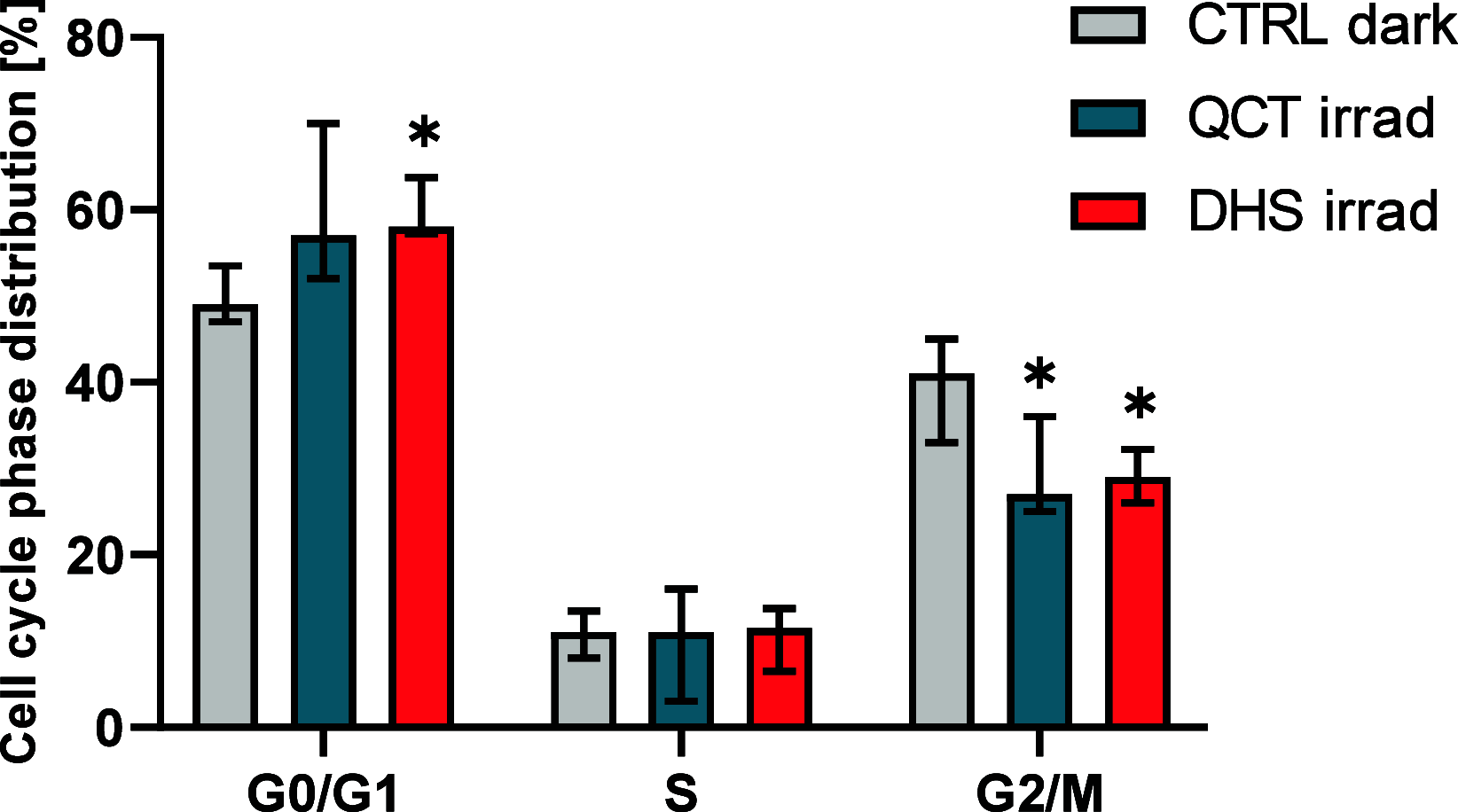Carbon Monoxide-Releasing Activity of Plant Flavonoids
- PMID: 39740217
- PMCID: PMC11741109
- DOI: 10.1021/acs.jafc.4c09069
Carbon Monoxide-Releasing Activity of Plant Flavonoids
Abstract
Flavonoids are naturally occurring compounds found in fruits, vegetables, and other plant-based foods, and they are known for their health benefits, such as UV protection, antioxidant, anti-inflammatory, and antiproliferative properties. This study investigates whether flavonoids, such as quercetin and 2,3-dehydrosilybin, can act as photoactivatable carbon monoxide (CO)-releasing molecules under physiological conditions. CO has been recently recognized as an important signaling molecule. Here, we show that upon direct irradiation, CO was released from both flavonoids in PBS with chemical yields of up to 0.23 equiv, which increased to almost unity by sensitized photooxygenation involving singlet oxygen. Photoreleased CO reduced cellular toxicity caused by high flavonol concentrations, partially restored mitochondrial respiration, reduced superoxide production induced by rotenone and high flavonol levels, and influenced the G0/G1 and G2/M phases of the cell cycle, showing antiproliferative effects. The findings highlight the potential of quercetin and 2,3-dehydrosilybin as CO-photoreleasing molecules with chemopreventive and therapeutic implications in human pathology and suggest their possible roles in plant biology.
Keywords: 2,3-dehydrosilybin; carbon monoxide; cell cycle; mitochondrial respiration; oxidative stress; photoCORM; photoinduced release; quercetin.
Conflict of interest statement
The authors declare no competing financial interest.
Figures









Similar articles
-
Development of Triggerable, Trackable, and Targetable Carbon Monoxide Releasing Molecules.Acc Chem Res. 2020 Oct 20;53(10):2273-2285. doi: 10.1021/acs.accounts.0c00402. Epub 2020 Sep 15. Acc Chem Res. 2020. PMID: 32929957 Free PMC article.
-
Structure-Photoreactivity Relationship of 3-Hydroxyflavone-Based CO-Releasing Molecules.J Org Chem. 2022 Apr 1;87(7):4750-4763. doi: 10.1021/acs.joc.2c00032. Epub 2022 Mar 13. J Org Chem. 2022. PMID: 35282677
-
Flavonoids from persimmon (Diospyros kaki L.) leaves inhibit proliferation and induce apoptosis in PC-3 cells by activation of oxidative stress and mitochondrial apoptosis.Chem Biol Interact. 2017 Sep 25;275:210-217. doi: 10.1016/j.cbi.2017.07.026. Epub 2017 Aug 12. Chem Biol Interact. 2017. PMID: 28811126
-
3-Hydroxyflavones and 3-Hydroxy-4-oxoquinolines as Carbon Monoxide-Releasing Molecules.Molecules. 2019 Mar 30;24(7):1252. doi: 10.3390/molecules24071252. Molecules. 2019. PMID: 30935018 Free PMC article. Review.
-
Carbon monoxide - beyond toxicity?Toxicol Lett. 2020 Oct 15;333:251-260. doi: 10.1016/j.toxlet.2020.08.010. Epub 2020 Aug 26. Toxicol Lett. 2020. PMID: 32860873 Review.
References
-
- Tapas A. R.; Sakarkar D. M.; Kakde R. B. Flavonoids as nutraceuticals: A review. Trop. J. Pharm. Res. 2008, 7 (3), 1089–1099. 10.4314/tjpr.v7i3.14693. - DOI
-
- Pradhan S. C.; Girish C. Hepatoprotective herbal drug, silymarin from experimental pharmacology to clinical medicine. Indian J. Med. Res. 2006, 124 (5), 491–504. - PubMed
MeSH terms
Substances
LinkOut - more resources
Full Text Sources

